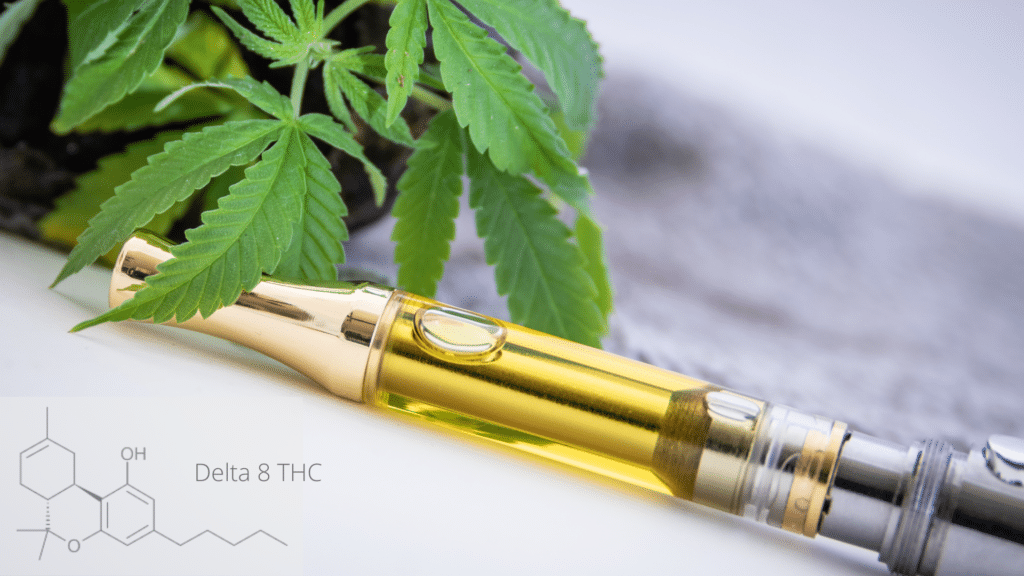Assuming there are no additives, is Delta-8 THC as safe to inhale as Delta-9 THC?
Written by CaliBlendz

Delta-8 THC is very different in its mode of action from Delta-9 THC. The potency of Delta-8 THC when smoked or ingested is roughly equal to that of CBD, which is known to be non-psychoactive and does not exhibit the intoxicating effects of Delta-8 THC. Delta-8 THC when taken as a pure chemical does not appear to be toxic or carcinogenic. There were reports of low blood pressure, mild euphoria and increased appetite in individuals who smoked high quantities of hemp in the early 1970”s; however, this occurred when hemp was extracted without selective breeding for marijuana content. More recent studies found no toxicity or behavioral effects at levels 5 times higher than typically found in modern strains of high-content Delta-9.

The European Industrial Hemp Association (EIHA) recently reported that there is anecdotal evidence that Delta 8 THC, “is less harmful to health than the equivalent amount of Delta 9 THC.” In a 2006 report titled “Industrial Hemp: Production, Processing and Applications for Natural Fibres, Drugs and Food,” EIHA wrote:
Delta 8 THC does not have any psychotropic effect and does not interfere with visual perception or locomotion activity. It has been said that delta 8 THC is less harmful to health than the equivalent amount of delta 9 THC (Wirth et al., 2004). Consequently, it has been speculated that cannabinoids which are devoid of psychotropic effects such as delta 8 THC or delta 9 CBD may be useful analgesic drugs for chronic pain syndromes (Matsuda et al., 1990). A trial towards this end was carried out by Wirth et al. using the synthetic cannabinoid levonantradol as a stand-in for delta 8 THC on otherwise healthy test subjects . The beneficial effects on pain relief were comparable but with lower side effects from that produced by synthetic delta 9 THC (Wirth et al., 2004).
In what form would Delta-8 THC be delivered?
Answer: The history of pain medicine suggests that pharmaceutical companies would likely attempt to deliver Delta-8 either by inhalation or topically. Like other cannabinoids, if delivered directly to the bloodstream through inhalation, absorption into internal organs such as the lungs would be rapid with generally immediate onset of effect. If absorbed through the skin topically, effects may take longer to occur due to slower delivery through the blood vessels; however many users have reported therapeutic benefits from topical application of various cannabis extracts. A topical formulation would likely need a carrier such as an oil capable of absorbing into skin tissue over time such as coconut oil or sesame oil before being absorbed into the bloodstream. Topical applications are thought to reduce some side effects associated with smoking such as coughing and throat irritation.
Oral ingestion appears to work well with CBD and may also work well with Delta-8 THC if sufficiently water soluble; however since we have only seen limited testing done on purified CBD so far it could turn out that some forms are better absorbed orally than others where more than one enzyme is required in its breakdown pathway before use by cells in which case a compound like Delta-8 may remain intact until reaching internal organs whereas CBD would be broken down sooner traveling through digestive systems before reaching internal organs which would then result in a far slower onset time due to breakdown into acids, bases and salts before reaching internal organs resulting in very few cells having access to them compared to compound like Delta-8 which would require no breakdown pathways whatsoever before reaching internal organs resulting in nearly immediate absorption rate where cells could quickly reach equilibrium resulting in an immediate onset time versus slow onset time typical of other compounds like CBD which uses enzymes found within saliva at initial contact sites followed by stomach enzymes whose presence is not guaranteed since many people take their medication early in morning on empty stomachs prior to eating breakfast followed by liver enzymes which also will take longer time period because most medications pass through liver long enough for liver enzymes metabolize them leaving less opportunity for receptors within internal organs delayed absorption times resulting from first pass metabolism leaving less opportunity for cells within internal organs at least two hours after ingestion whereas inhaled medication passes through lungs too quickly fulfilling needs without delay while passing through liver leaving less opportunity for waste products during first pass metabolism where hepatocytes will break down compounds resulting in faster absorption rates compared with compounds requiring more than one enzyme pathway leading up intestinal cells including but not limited to brush border epithelial cells membrane transporters capacitative Ca2+ channels Caco-2 cell monolayers large intestinal MDCK monolayers kidney P450suc conjugating enzymes catalase peroxidases cytochrome p450 cyp1a2 cyp2c9 cyp3a4 cyp1a1 glutathione conjugates sulfate conjugates glucuronidase carboxylases glucuronosyltransferases MDR transporters MRP transporters ATPases Na+K+ATPase plasma membrane Na+/K+/2Cl– cotransporter protein SLC24A3 rs1045642 rs6454676/rs6454679 rs1076470 rs17681615 rs17685598 rs3740861 rs990992 rs2282751/rs2282752/plasma membrane Na+/K+ATPase protein SLC5A5 rs1045642 rs1076470 plasma membrane Na+/K+ATPase protein SLC5A7 rs1045642 plasma membrane Na+/K+ATPase protein SLC5A6 ms112083 acyl–CoA cholesterol acyltransferase enzyme SCARB1 plasmalemma CB 1 receptor inhibitor GPR35 AM2201JWH receptor agonist palmitoylethanolamide CB 2 receptor blocker Osteopontin CB 1 antagonist HU–210 CB 2 agonist








